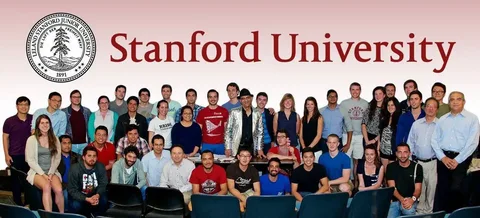Introduction
For many international students, scholarships provide a gateway to pursuing higher education abroad without the burden of financial stress. However, the scholarship application process can be complex, with various criteria, deadlines, and requirements to navigate. Understanding how to approach this process can make a significant difference in your success. This guide aims to demystify the scholarship application process, offering practical advice and insights to help you stand out as an applicant. From finding the right scholarships to submitting a winning application, we will cover everything you need to know. Let’s embark on this journey to help you secure the funding you need for your educational goals.
1. Understanding Scholarships for International Students
1.1 What is a Scholarship?
A scholarship is a form of financial aid awarded to students based on various factors such as academic merit, extracurricular achievements, financial need, or specific talents. Unlike loans, scholarships do not require repayment, making them an ideal way to fund education abroad. They can be offered by universities, government bodies, private organizations, and non-profit foundations.
1.2 Types of Scholarships Available for International Students
- Merit-Based Scholarships: Awarded based on academic excellence, such as high grades or outstanding performance in standardized tests.
- Need-Based Scholarships: Offered to students who demonstrate financial need, helping those who may not have the means to fund their education.
- Program-Specific Scholarships: Targeted at students pursuing specific courses or fields of study, like engineering, arts, or medical sciences.
- Country-Specific Scholarships: Provided to students from particular countries to promote diversity and international relations.
- University-Specific Scholarships: Offered by universities to attract talented international students.
1.3 Why Scholarships are Important for International Students
Scholarships play a crucial role in making education accessible for international students. They not only reduce the financial burden but also recognize and reward talent, fostering a culture of academic excellence. Scholarships can also enhance a student’s resume, indicating that they have been recognized for their achievements and capabilities.
2. Researching Scholarships: Where and How to Find Them
2.1 Online Scholarship Databases
Numerous online platforms can help you find scholarships suited to your profile. Websites such as Fastweb, Scholarships.com, and Scholarship Portal allow you to search for scholarships based on criteria like your country of origin, field of study, and academic background.
2.2 University Websites
Many universities provide detailed information on the scholarships they offer to international students. Visit the financial aid or international student sections of the university’s website to find out more about the available scholarships, eligibility criteria, and application deadlines.
2.3 Government and Non-Profit Organizations
Governments and non-profit organizations often offer scholarships to promote cultural exchange and international education. Examples include the Fulbright Program (USA), Chevening Scholarships (UK), and the DAAD Scholarships (Germany).
2.4 Educational Fairs and Networking Events
Attending educational fairs and networking events can provide valuable insights into scholarship opportunities. These events often feature representatives from universities and scholarship programs who can answer your questions and guide you through the application process.
3. Preparing for the Scholarship Application
3.1 Understanding Eligibility Criteria
Before applying, carefully review the eligibility requirements for each scholarship. Criteria may include academic qualifications, language proficiency, country of residence, and specific talents or skills. Ensure you meet these requirements to avoid wasting time on applications that will not be considered.
3.2 Collecting Essential Documents
Preparing the required documents in advance can streamline the application process. Commonly requested documents include:
- Academic Transcripts: Certified copies of your high school or university records.
- Standardized Test Scores: Results from exams like SAT, ACT, GRE, GMAT, IELTS, or TOEFL.
- Letters of Recommendation: Endorsements from teachers, professors, or employers who can attest to your skills and achievements.
- Statement of Purpose (SOP): An essay that outlines your academic goals, career aspirations, and reasons for applying for the scholarship.
- Proof of Extracurricular Activities: Certificates or awards that showcase your skills and involvement outside the classroom.
4. Writing a Compelling Scholarship Essay
4.1 Understanding the Purpose of the Essay
A scholarship essay is your chance to stand out among other applicants. It allows you to showcase your achievements, express your passion for your chosen field, and explain why you deserve the scholarship. Crafting a well-thought-out essay can significantly improve your chances of success.
4.2 Tips for Writing an Effective Essay
- Be Authentic and Personal: Share your story honestly, highlighting what makes you unique. Discuss your challenges, successes, and how you have overcome obstacles.
- Tailor Your Essay to the Scholarship: Each scholarship may have different criteria. Customize your essay to match the specific requirements and goals of the scholarship provider.
- Highlight Your Achievements and Goals: Clearly articulate your academic achievements, extracurricular activities, and future aspirations. Explain how the scholarship will help you achieve your goals.
- Proofread and Edit: Make sure your essay is free of grammatical errors, typos, and inconsistencies. Consider asking someone else to review your essay for clarity and coherence.
5. Gathering Strong Letters of Recommendation
5.1 Choosing the Right Recommenders
Select individuals who are familiar with your academic abilities, work ethic, and character. Professors, mentors, and employers can be excellent choices for recommendation letters. Make sure to approach recommenders who can provide specific examples of your strengths.
5.2 Providing Guidance to Recommenders
Help your recommenders by providing them with information about the scholarship and what it is looking for. You can also share your resume and key achievements so they can highlight relevant experiences in their letters.
6. Submitting Your Application
6.1 Following the Application Instructions
Each scholarship application has its own set of guidelines. Make sure to read the instructions carefully and follow them exactly. Submit all required documents and double-check that everything is complete before submitting.
6.2 Keeping Track of Deadlines
Scholarship deadlines are often well before admission deadlines, so it is crucial to keep track of them. Create a calendar or set reminders to ensure you do not miss any important dates.
7. Handling Scholarship Interviews
7.1 Preparing for the Interview
Some scholarships require an interview as part of the selection process. Prepare by researching common interview questions, practicing your answers, and familiarizing yourself with the scholarship’s goals and values.
7.2 What to Expect During the Interview
Interviews may be conducted in person or online. Expect questions about your academic background, career goals, and reasons for applying for the scholarship. Be honest, confident, and articulate when answering.
8. Dealing with Rejections and Continuing Your Search
8.1 Learning from Rejection
Receiving a rejection can be disheartening, but it is not the end of the road. Take time to review your application and identify areas for improvement. Seek feedback if possible and use it to refine your future applications.
8.2 Applying to Multiple Scholarships
Do not limit yourself to one or two scholarships. Apply to as many as you are eligible for to increase your chances of success. Each application is an opportunity to learn and improve.
9. Additional Resources for Scholarship Applicants
9.1 Online Scholarship Platforms
- Scholarship Portal
- International Scholarships
- Scholarships.com
9.2 Educational Consulting Services
If you find the scholarship application process overwhelming, consider seeking help from educational consulting services. These professionals can guide you through the process, help with essay writing, and provide insights into scholarship opportunities.
Conclusion
The scholarship application process for international students requires careful planning, dedication, and perseverance. By understanding the types of scholarships available, preparing strong application materials, and following the steps outlined in this guide, you can significantly improve your chances of securing financial aid for your studies abroad. Remember, persistence is key. Keep searching, keep applying, and do not let setbacks deter you from achieving your educational dreams.






